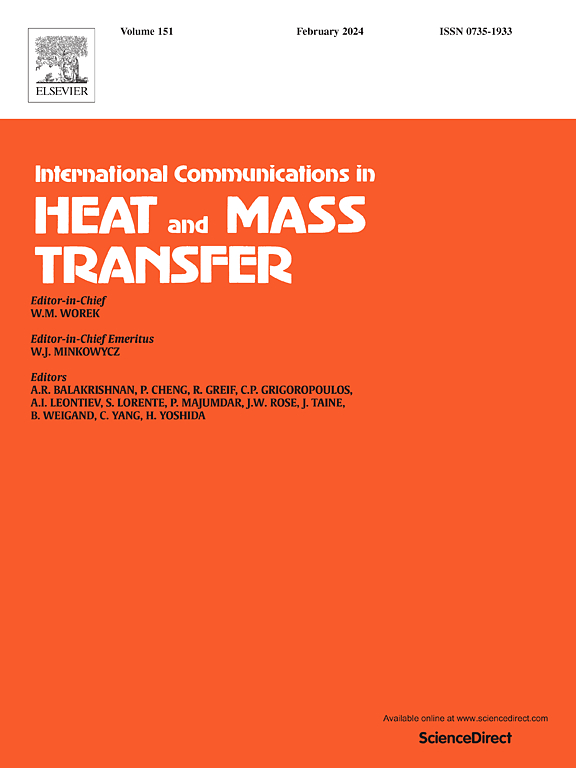The relationship between these temporal characteristics of micro-explosive breakup of water/fuel composite droplets and the ambient gas temperature
IF 6.4
2区 工程技术
Q1 MECHANICS
International Communications in Heat and Mass Transfer
Pub Date : 2025-03-24
DOI:10.1016/j.icheatmasstransfer.2025.108896
引用次数: 0
Abstract
The processes of micro-explosive breakup of water/fuel composite droplets have been actively studied recently and are used in various technological applications. However, the challenge of finding the most efficient combinations of input parameters to result in the shortest breakup delay, lowest energy consumption, and largest number of child droplets, while also allowing for generalization of experimental findings, remains unresolved. It is essential to understand how these characteristics depend on input parameters. To do this, it is important to determine the kinetic characteristics of droplet heating before micro-explosion and relate them to the properties of the liquids and heating conditions. This paper presents the micro-explosion delay times for two-liquid droplets based on experimental findings. It also presents the relationship between these temporal characteristics and the ambient gas temperature, as well as the thermal energy supplied to the droplets through various heating arrangements. The experiments were conducted using droplets consisting of water and three different types of fuel: kerosene, Diesel fuel, and rapeseed oil. The mathematical analysis of the experimental data revealed the exponential nature of the delay time of the micro-explosion with respect to temperature and heat flux. The pre-exponential factor and activation energy in the Arrhenius equation were determined after considering the influence of various factors, such as temperature, heat exchange conditions, and physical and chemical properties of the liquids and the surrounding gas. These findings confirm that micro-explosions in gas-vapor-droplet systems can occur without the risk of spontaneous ignition.
求助全文
约1分钟内获得全文
求助全文
来源期刊
CiteScore
11.00
自引率
10.00%
发文量
648
审稿时长
32 days
期刊介绍:
International Communications in Heat and Mass Transfer serves as a world forum for the rapid dissemination of new ideas, new measurement techniques, preliminary findings of ongoing investigations, discussions, and criticisms in the field of heat and mass transfer. Two types of manuscript will be considered for publication: communications (short reports of new work or discussions of work which has already been published) and summaries (abstracts of reports, theses or manuscripts which are too long for publication in full). Together with its companion publication, International Journal of Heat and Mass Transfer, with which it shares the same Board of Editors, this journal is read by research workers and engineers throughout the world.

 求助内容:
求助内容: 应助结果提醒方式:
应助结果提醒方式:


